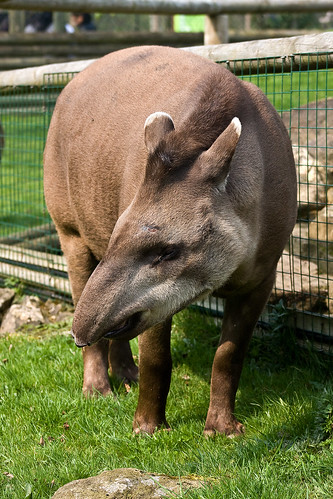
A recent e-mail from Caitlin gave me the excuse I needed to post some numbers and an explanation:
December 16, 2009
Dear Caitlin,
Thank you for asking what we've been doing in 2009, since the
Tapir Gallery Web site has not been updated recently. It seems that the last thing I get around to is putting current info on the site. This is truly unfortunate, and it should be done regularly. We've been keeping busy over here, as you'll see in a minute. I kept looking for a good format for donation and disbursement info on the site, and came up with several formats that didn't really work. The format is hard to understand and is incomplete. At least I should put it on the info on the blog, and I do have some clarity for public announcements in 2010. For now, here it is what I have for the past four years.
None of the years addressed on the web site as it is right now reflects the whole picture. Here are the actual totals going back to 2006:
2006
. Contributions income: $3,452
. Donations from TPF to the field: $2,700
The difference was used by the Tapir Preservation Fund internally.
2007
. Contributions income: $10,415
. Donations from us to the field: $19,492
The difference was paid from our gift shop sales.
2008
. Contributions income: $4,972
. Donations from TPF to the field: $17,467
The difference was paid from our gift shop sales.
2009 Year to Date (Dec 16)
. Contributions income: $3,261
. Donations to the field: $2,951
We still have money to send to the field, see below.
2009's donations went to:
. Wilson Novarino (Sumatra, Asian tapir)
. Sergio Sandoval (Colombia, Mountain tapir genetics)
. Kendra Bauer (USA/Costa Rica, Baird's tapir)
We will soon be sending over $1,000 to two projects, one of which is still to be determined.
What we've been doing with our time this year is that we've been improving the gift shop. We installed a new shopping cart to be up with the times (and our old one was discontinued by the credit card company), and that was a huge effort getting everything to work right. We've been upgrading the store in many ways and trying to make ends meet in the slow economy. Hopefully this next year I'll have time to work more on the tapir web site and also work more with various tapir colleagues working in the field. I have ideas for new fundraising projects, and I may think about bringing back Club Tapir once the economy begins to recover. It became more time-consuming than it was worth for the amount we collected in donations.
Many thanks to all of you who have helped with your ideas, photos, and donations!
Here's to a creative, productive, and prosperous 2010 for everyone. . . .
All the best,
Sheryl
 A recent e-mail from Caitlin gave me the excuse I needed to post some numbers and an explanation:
A recent e-mail from Caitlin gave me the excuse I needed to post some numbers and an explanation:

































.JPG)













